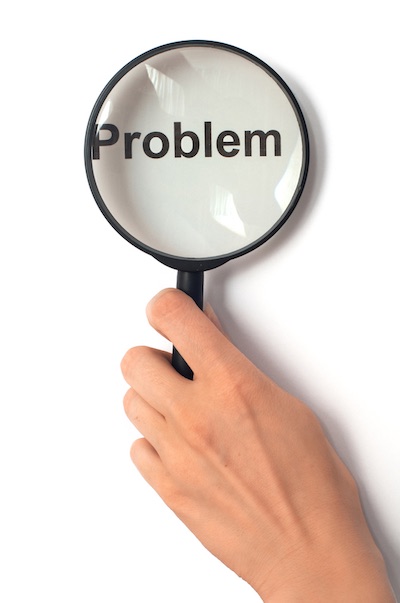“This question may seem quite in the weeds…but it does highlight the fact that post grant challenges at the PTAB are a mongrel mixture of a little bit prosecution, a little bit litigation, and a whole lot of uncertainty.”
 A recent Post Grant Review (PGR) petition raises several interesting questions, including whether the crossing of two varieties of corn previously crossed and already owned by the patent owner results in a non-obvious claimed invention. See Inari Agriculture, Inc. v. Pioneer Hi-Bred International, Inc., PGR2024-00025. But as interesting as that obviousness question may be, and how easy it seems it is to get a utility plant patent issued, the question of greater concern for the system relates to which test for indefiniteness the U.S. Patent and Trademark Office (USPTO) should be using, and why.
A recent Post Grant Review (PGR) petition raises several interesting questions, including whether the crossing of two varieties of corn previously crossed and already owned by the patent owner results in a non-obvious claimed invention. See Inari Agriculture, Inc. v. Pioneer Hi-Bred International, Inc., PGR2024-00025. But as interesting as that obviousness question may be, and how easy it seems it is to get a utility plant patent issued, the question of greater concern for the system relates to which test for indefiniteness the U.S. Patent and Trademark Office (USPTO) should be using, and why.
Nautilus or Packard—that is the question presented by the Inari PGR challenge of a utility plant patent owned by Pioneer Hi-Bred International—U.S. Patent No. 11,707,033. And while the standards for indefiniteness are similar, they are not the same.
The approach followed by the USPTO for assessing indefiniteness during prosecution is the approach approved by the Federal Circuit in In re Packard – “[a] claim is indefinite when it contains words or phrases whose meaning is unclear.” 751 F.3d at 1310, 1314. Put differently, “claims are required to be cast in clear-as opposed to ambiguous, vague, indefinite-terms.”
However, in litigation, the test used for determining whether a claim is indefinite and must be invalidated comes from Nautilus v. Biosig, 134 S. Ct. 2120 (2014), which the Court explained mandates clarity, while still recognizing that absolute precision is unattainable. More specifically, the Supreme Court in Nautilus wrote:
“We conclude that the Federal Circuit’s formulation, which tolerates some ambiguous claims but not others, does not satisfy the statute’s definiteness requirement. In place of the “insolubly ambiguous” standard, we hold that a patent is invalid for indefiniteness if its claims, read in light of the specification delineating the patent, and the prosecution history, fail to inform, with reasonable certainty, those skilled in the art about the scope of the invention.”
Flip-Flop
But what is the standard that should apply in PGR and IPR? Should the Patent Trial and Appeal Board (PTAB) be applying the Packard standard applied during examination, or the Nautilus standard applied during litigation? The USPTO position has flip-flopped on this question, and thus far the Federal Circuit and Supreme Court have dodged the question.
The PTAB in Ex partre McAward, a precedential opinion in an ex parte appeal taken from an examiner’s final rejection of claims, wrote:
“We recognize that after the Packard decision, the Supreme Court in Nautilus, Inc. v. Biosig Instruments, Inc. explained that the “definiteness command” of §112, para. 2 “require[s] that a patent’s claims, viewed in light of the specification and prosecution history, inform those skilled in the art about the scope of the invention with reasonable certainty.” The Court stated that “[t]he definiteness requirement, so understood, mandates clarity, while recognizing that absolute precision is unattainable.” Id. We do not understand Nautilus, however, to mandate a change in the Office’s approach to indefiniteness…
Thus, in this proceeding, we apply the approach for assessing indefiniteness approved by the Federal Circuit in Packard, i.e., ‘[a] claim is indefinite when it contains words or phrases whose meaning is unclear.’ 751 F.3d at 1310, 1314. Put differently, “claims are required to be cast in clear-as opposed to ambiguous, vague, indefinite-terms.”
Similarly, the year before McAward, in a post grant challenge in Telebrands v. Tinnus Enterprises, the PTAB wrote:
“[W]e apply the test for indefiniteness approved by the Federal Circuit in Packard, i.e., “a claim is indefinite when it contains words or phrases whose meaning is unclear.” We recognize that Packard involved a USPTO patent-examination matter. We also recognize that subsequent to the Packard decision, the Supreme Court in Nautilus enunciated a differently worded definiteness requirement in the context of patent infringement litigation. We do not understand Nautilus, however, to mandate the Board’s approach to indefiniteness in patent examination or reexamination matters or in AIA proceedings, in which the claims are interpreted under the broadest reasonable interpretation standard, and an opportunity to amend the claims is afforded. The test for indefiniteness approved in Packard, which is applied by the USPTO in patent examination, sets a threshold for indefiniteness that demands at least as much clarity, and potentially more clarity, than the Nautilus definiteness requirement. See MPEP § 2173.02(I).”
Thus, it seemed settled, the USPTO follows Packard, not Nautilus. But then in 2021 a jointly issued memo from USPTO Director Andrei Iancu, Commissioner for Patents Drew Hirshfeld, and PTAB Chief Judge Scott Boalick changed everything.
This 2021 memo explained a switch was necessary because in 2018 the office revised 37 CFR 42.100(b) and 42.200(b) to change the claim constructions standard used in post-grant trial proceedings from the broadest reasonable interpretation to use the claim construction standard employed in civil patent infringement litigation. The memo further explained:
“The office now clarifies that the Board shall follow Nautilus in AIA post-grant proceedings. Because the office’s claim construction standard in AIA post-grant proceedings now aligns with that used by courts in a civil action, and because indefiniteness questions are generally considered as part of the claim construction process, the office’s approach to indefiniteness in AIA post-grant proceedings should likewise align with that used by the courts following the Supreme Court’s decision in Nautilus. As with the claim construction standard, aligning the indefiniteness approach in AIA post-grant proceedings will promote consistency and efficient decision making among coordinate branches of government that decide similar issues in co-pending proceedings. This memorandum confirms, therefore, that Nautilus is the correct approach for analyzing indefiniteness in AIA post-grant proceedings.”
Since, the PTAB has applied Nautilus, which is now being specifically questioned as being built on a faulty premise, and also as “an improper agency rule made outside of proper Notice-and-Comment-Rulemaking.” Petition for Post-Grant Review, PGR2024-00025, page 10.
Let’s Stop the Flop
This question may seem quite in the weeds, and unlikely to matter for most indefiniteness inquiries, but it does highlight the fact that post grant challenges at the PTAB are a mongrel mixture of a little bit prosecution, a little bit litigation, and a whole lot of uncertainty. It also highlights the risk of another flip-flop in the future. If this can be done via memorandum and outside agency rulemaking, then it can be undone by memorandum if and when the next Director disagrees.
Image Source: Deposit Photos
Author: Flatart
Image ID: 603894376

![[IPWatchdog Logo]](https://ipwatchdog.com/wp-content/themes/IPWatchdog%20-%202023/assets/images/temp/logo-small@2x.png)

![[Advertisement]](https://ipwatchdog.com/wp-content/uploads/2024/05/LexisNexis-May-16-2024-sidebar-700x500-1.jpg)
![[Advertisement]](https://ipwatchdog.com/wp-content/uploads/2024/04/Patent-Litigation-Masters-2024-sidebar-last-chance-700x500-1.jpg)
![[Advertisement]](https://ipwatchdog.com/wp-content/uploads/2024/05/Patent-Portfolio-Management-2024-sidebar-super-early-bird-with-button-700x500-1.jpg)
![[Advertisement]](https://ipwatchdog.com/wp-content/uploads/2024/05/Artificial-Intelligence-2024-Getting-AI-Patents-Allowed-sidebar-700x500-1.jpeg)

![[Advertisement]](https://ipwatchdog.com/wp-content/uploads/2021/12/WEBINAR-336-x-280-px.png)
![[Advertisement]](https://ipwatchdog.com/wp-content/uploads/2021/12/2021-Patent-Practice-on-Demand-recorded-Feb-2021-336-x-280.jpg)
![[Advertisement]](https://ipwatchdog.com/wp-content/uploads/2021/12/Ad-4-The-Invent-Patent-System™.png)







Join the Discussion
6 comments so far. Add my comment.
Pro Say
April 30, 2024 04:38 pmPainfully true Anon at April 30, 2024 11:32 am (and yet another great reason for PGRs to be banished).
Anon
April 30, 2024 11:32 amPost Grant Review was never a good idea, and even the structure was insufficient from Day One.
I have pointed this out before: for patents that emerge from Post Grant Review in amended form**, these are set out as Granted Patents when no actual examination on the amended claims has been performed by those dictated to examine under the law.
**the rare exception – that proves the rule – would be amendments to place original dependent claims in independent form with no other changes.
This is so for the following two reasons:
1) Amended claim scope may well be untested.
The original “granted claim scope perimeter” is REVOKED (leastwise, the presumption of validity of such) at the Institution Decision Point.
At that point, one cannot rely ON ANY of the prior examination as providing the claim scope of a granted patent.
This applies to Independent claims, as well as Dependent claims.
If an amendment is made – less than the scope of the Independent claims, but greater than the scope of the (original) Dependent claims, then you have an unexamined claim scope.
2) There is no actual examiner doing any examination in post grant review.
This is a structural flaw. No party involved in a Post Grant Review is a proper examining party.
The Petitioner, while perhaps thorough, is not an examiner, and may be biased merely by their own business viewpoint.
The Patentee is certainly not an examiner (and merely ‘less than original scope is NOT proper examination, as noted above).
The PTAB is certainly not an examiner – they cannot be, as they must be the NEUTRAL arbiter.
Further – the structural flaw of LACK of actual examination is compounded by the fact that there is NO feedback mechanism to actually provide a quality function BACK TO original examination.
As I have also posted previously, it’s like an actual manufacturing company having a warranty program, but NOT tying any warranty defect analysis back into its production mechanisms (and keep on pumping out bad product).
Pro Say
April 29, 2024 01:57 pmHey — whatcha gonna do? Mongrels gonna mongrel.
“the Federal Circuit and Supreme Court have dodged the question.”
Something they’re all so good at . . . given that they were all dodge-ball champions back in grade school. Some judges just don’t wanna grow up.
Unclear
April 29, 2024 10:43 amWhat is the flip-flop? I see the initial flip. The PTO applied Packard when it was following the looser BRI construction standard in both ex parte and inter parties cases. Then, when the PTO switched to the Philips standard for AIA trials—a changed pushed for by patent owners—it announced that Nautilus and not Packard would apply there, where BRI was no longer followed. The logic of that claim construction flip is questionable, but the resulting change in the 112(b) standard is just the result of that flip.
But where is the flop? Has the PTO gone back to Packard in IPRs or PGRs? If not, no
flip-flop.
Julie Burke
April 28, 2024 03:20 pmAnd working upstream, here’s a peek into USPTO OPQA’s results for patent examiner compliance with 35 USC 112(b).
https://www.linkedin.com/posts/julie-burke-492264120_uspto-opqa-results-fy2023-compliance-with-activity-7190429184580534272-YvNI?utm_source=share&utm_medium=member_desktop
Josh Malone
April 28, 2024 02:48 pmI asked the Federal Circuit to provide certainty by ruling on this issue in 2017. They declined to address the question, reversing the PTAB on the merits instead.
Of course the correct answer is Nautilus. The USPTO must submit to the Supreme Court.
Add Comment